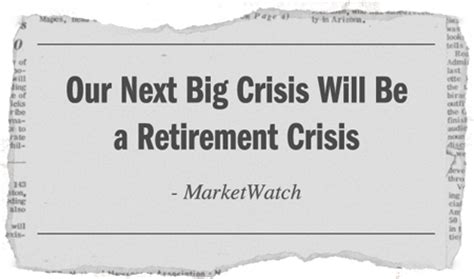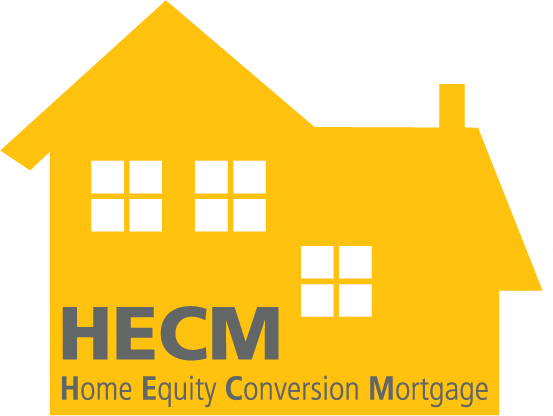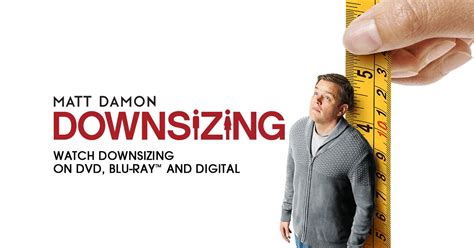The first Social Security check was mailed out in 1940. That first check went to Ida May Fuller, dated January 31, 1940, in the amount of $22.54. She had worked under the Social Security system for less than three years.
Back then, the average male retired at age 65… and then died at age 67. So, back then, preparing for retirement meant saving enough to support your lifestyle after retiring for a small handful of years, on average.
Today, when someone retires at 65, his or her average life expectancy is over 15 years, which means that half of that population, after turning 65, will live past 80. And once you make it to age 80, your average life expectancy will be almost 90. At 90… it’s almost 95.
The simple fact is that today, retirement is measured in decades… not years. And that, combined with the rising costs of health care among other things, makes saving enough so that you can maintain your lifestyle and not running out of money before reaching your life expectancy much harder than it ever was in the past. That’s just a fact.
Today, very few 65 year-olds have enough saved to maintain a comfortable lifestyle for 20 years or longer without income or running out of money. One study I read recently said that the average balance in a 65 year-old’s 401(k) account is $100,000… another report showed that number to be closer to $160,000. Neither is nearly enough. Today, even having $1 million in savings is no guarantee that you’ll make it 20 years or longer without bringing home a paycheck from work.

Increasingly, the media is talking about this as a “looming crisis,” and that trend is destined to continue throughout my lifetime, as this country watches 80 million baby boomers age into their 80s and beyond.
Look, it’s not that we all didn’t try to save more for our retirement years… we’re not all irresponsible spenders, as some would have you believe. It’s that we’ve been bubbled to death over the last 30 years, stuck in a near zero interest rate environment that makes safely saving money almost impossible, and all the while, we’ve endured college tuition costs that are up by 1100% over the last decade, to say nothing of health care costs that are completely out of reach. And more.
The only thing many of us have of significant value is our homes, but we have to live somewhere so selling a home to fund retirement is often not helpful.
For example, let’s say your home is worth $500,000 and you’ve managed to pay it off or at least come close. You could sell it for $500,000… but then you’d need to find somewhere to live that costs less than $500,000. Otherwise, why sell it, right? I mean, if the next house is going to cost $500,000 or close, what’s the point of going through the hassle of selling and moving?
And so, we stay put, hoping that we’ll somehow be able to keep paying the bills on Social Security and whatever else we’ve got in the bank after raising families, recovering from recessions and sending kids to college.

Ask people over age 50 what they plan to do about retiring and most will tell you: “I’m just going to keep working until I drop dead.”
That’s a cute phrase, I realize, but when I hear it, I always wonder whether the person saying it understands that life often doesn’t work like that. In fact, a recent study published by USA Today showed that 50 percent of those that plan to keep working past age 65, end up retiring unexpectedly. Half end up having to retire for health reasons, but another 20 percent retire to care for a family member, and the rest because they get laid off at work or something similar.
There is one answer that would go a long way towards solving the problem for many Americans and it’s shocking how few know about it… it’s called the HECM-for-Purchase.

A HECM-for-Purchase is a type of FHA insured mortgage that, when used in conjunction with downsizing one’s primary residence, can provide retirees with money they need to survive retirement, even if they haven’t saved a dime.
Here’s how it works…
Let’s say that I own a home that’s worth roughly $700,000, and by the time I reach age 65, let’s say I’ll owe about $100,000 on our mortgage. And who knows… maybe it’ll be worth $750,000 by then, or maybe even a little more.
So, if I were to sell my home at that point in my life, I think it’s safe to assume that I’d walk away with at least $600,000, after repairs, sales commissions and moving costs, et al.
Of course, in many parts of the country, the only kind of house I’d be able to buy for less than $600,000, would be on Boardwalk or Park Place, right? I actually can’t imagine anything that I’d like living in that would sell for less than $600,000.

Enter the HECM-for-Purchase…
However, by using the HECM-for-Purchase, I’d be able to put a little less than $300,000 down on a $600,000 home, and then not have to make any monthly payments as long as I’m living in the home and continuing to pay my property taxes and insurance.
That would mean that I’d be able to put $300,000 in my own bank account and still buy a $600,000 home or condo… and all because I used the HECM-for-Purchase to make it happen.
Now, if I don’t make any payments on the loan, the interest will be added to the balance of the loan. Someday, when either I sell the home or after I’ve gone and my daughter sells it, she’ll keep whatever equity is remaining in the property and the rest will pay off the HECM-for-Purchase mortgage that I used to buy the home, but on which I never had to make payments.
Think about it… one day I was sitting in my $700,000 home that I purchased back in 1990 and in which I raised my daughter, wondering how I’d make it through my retirement years, scared that I’d end up a burden on my daughter or not able to afford the medical care that I could someday need…
… and the next day I sold the home, put at least $300,000 in my bank account, and purchased another home for $600,000 using the HECM-for-Purchase so that no monthly mortgage payments would be required.

Yesterday, I had no money in the bank to speak of, but after selling my home my account balance was over $300,000… I had no mortgage payments to make each month… and I could continue living in that home while making no payments for the rest of my life, if that’s what I want to do.
With no monthly mortgage payments to make, I would then be able to live on monthly income from Social Security, and with $300,000 in the bank, I could also pay for the unexpected expenses that come up from time to time, take vacations here and there, and buy my grandchildren gifts on their birthdays and holidays.
In addition, by investing $200,000 of the proceeds from the sale of my home, I’d also be able to earn some interest on my money… let’s say four percent a year is a reasonable assumption, so that’s another $10,000 a year that’s being added to that balance, at least during the first five years of my retirement.
If I really got creative, perhaps I bought a duplex or a place with a rental unit over the garage and so then had a renter paying me $1200 a month, in addition to what I receive each month from Social Security.
I don’t know what I’ll do exactly, but what I do know is that the HECM-for-Purchase is the ONLY tool capable doing what I’m describing.
And consider what happens when I change the numbers a bit. Some people have homes they could sell for $1 million or more and after paying the sales costs, they can walk away with $800,000 or even more. After they put $300,000 down on a $600,000 home or condo, they’ll put $500,000 or more into their bank accounts.
Even if they’ve saved nothing until then, they’ve just put $500,000 into their account because of the HECM-for-Purchase. Without the HECM-for-Purchase, what I’m describing simply wouldn’t be possible.
Why don’t Realtors know about how the HECM-for-Purchase can work for retirees?

I’ve spent three years studying the HECM mortgage products, and that includes months spent calling hundreds of Realtors and mortgage experts all over the country. It’s amazing but I have never come across a single Realtor familiar with the HECM-for-Purchase prior to my call, and most mortgage people barely know the product exists.
The reason I find this so surprising is that understanding how the HECM-for-Purchase works would make Realtors a lot more money by creating listings and sales where neither existed before the HECM-for-Purchase was brought into the picture.
Remember, using me as the example, without the HECM-for-Purchase I wouldn’t sell my home and move because I’d have to spend whatever I’d get from the sale of my home on my next home, so what would be the point?
However, once I came to understand that I could hold onto half the cash from the sale of our home, and still buy another home for $600,000, that I could live in forever without having to make monthly payments… well, now I became ready to list my home and start shopping for another. All it took was someone to explain to me how the HECM-for-Purchase would work for me, in my situation.
So, why don’t Realtors know enough about the HECM-for-Purchase to explain at least the basics to their prospective clients? Don’t all Realtors want more listings and more sales?
Of course they do, but for whatever reason the ones in my neighborhood seem only able to knock on doors, hold open houses, attend networking events, and hand out personalized note pads. I’ve asked many of them about the HECM-for-Purchase and most of the time all I get in response is a blank stare.
How to begin…

The best way for you to gain a solid understanding of how the HECM-for-Purchase works is to see how your real-life situation would be impacted by using it. First of all, you have to be 62 years of age and own a home. Next, figure out approximately how much your home is worth and how much you’d expect to receive from the sale after real estate commissions.
Let’s say that number is $500,000. That’s how much you figure you’ll receive from selling your home. Now, let’s say that you find a smaller home to move into and it’s selling for $500,000. By using the HECM-for-Purchase to buy that home, you’ll only need to put roughly 50% down and then you won’t have to make any monthly payments if you don’t want to… and you can live in the home forever.
That way, the other $250,000 you received from the sale of your home can be deposited into your own bank account.
Of course, with the HECM-for-Purchase you CAN make payments whenever you want to make payments. You could make interest only payments or principal payments… or no payments… it’s all up to you. You control the mortgage instead of the mortgage controlling you.
The HECM-for-Purchase is a type of reverse mortgage, so you still have to pay your property taxes and insurance, but you never have to make a mortgage payment if you don’t want to.
What if you sold your home for $800,000? Then you could put $500,000 in the bank because with the HECM-for-Purchase you could buy a $600,000 home with $300,000 down and no monthly mortgage payments. If you sold your home and received $400,000… you could use the HECM-for-Purchase and put $200,000 in the bank and use the other $200,000 to buy a $400,000 home.

Get the idea?
There are 10,000 people a day turning 62 years of age in this country and that’s going to continue for the next 15 years or longer. Soon, we’ll have close to 80 million people over 65, and precious few are prepared financially to live for decades without a paycheck from work. They need creative answers and real solutions and for many, the HECM-for-Purchase is the single best tool for downsizing available anywhere.
Shouldn’t everyone understand how the HECM-for-Purchase can change their retirement picture when downsizing in retirement? It would seem the obvious answer would be yes.
Questions or comments? Email me at: mandelman@mac.com.
Mandelman out.









One Response